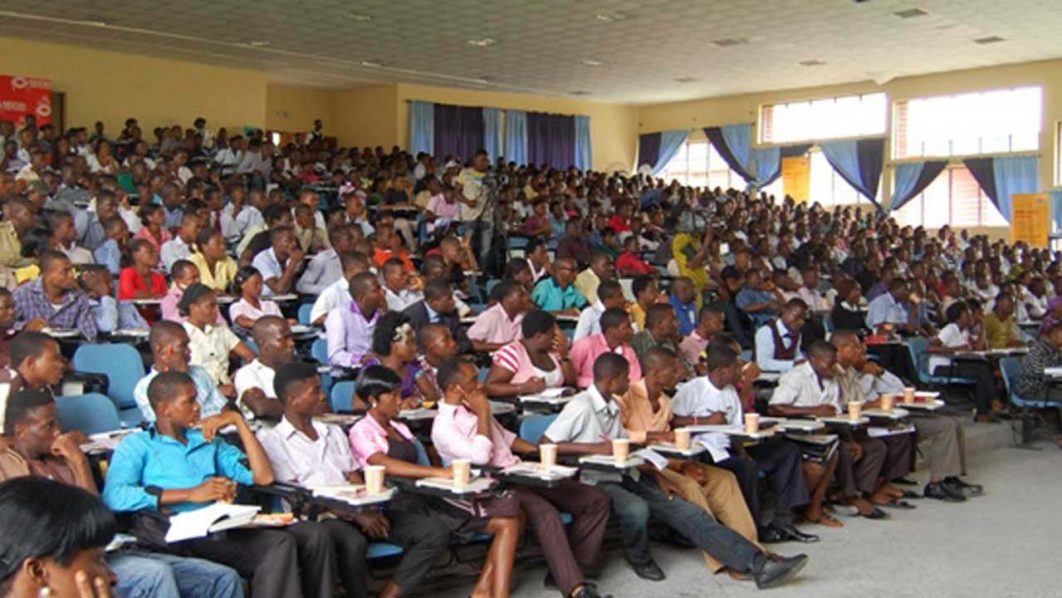The internet was awash with arguments for and against the Joint Admissions and Matriculations Board’s (JAMB) minimum obtainable cut-off mark for the 2022/2023 academic session that was announced on June 24, 2023.
Let us first restate the minimum obtainable cut-off mark. On Saturday, June 24, the Registrar of the board, Professor Is-haq Oloyede, at the 2023 Policy Meeting on Admissions to Tertiary Institutions, in Abuja, announced the minimum obtainable cut-off marks as follows.
The minimum obtainable cut-off mark for admission into universities across Nigeria is 140 out of 400 maximum obtainable. This represents 35 per cent of the total obtainable marks at the Unified Tertiary Matriculations Examination (UTME), equivalent to scoring three and a half over 10. Oloyede said 100 had been approved as the minimum cut-off mark for Polytechnics and Colleges of Education. This represents 25 per cent of the highest obtainable, and the equivalent of two and a half over ten.
While we do not believe that test scores are the best measure of intelligence, we hold that they are useful indicators of scholastic aptitude. We know that Howard Gardner, a psychologist and professor at Harvard University, in his 1983 seminal book “Frames of Mind” identified eight types of human intelligence, each representing different ways of how a person best processes information. We shall list them in passing because this theory of multiple intelligences will come in handy later in this editorial.
Spatial intelligence is the ability to think in multiple dimensions. Bodily-kinesthetic intelligence is the ability to use your body in a way that demonstrates physical and athletic prowess. Musical intelligence is sensitivity to rhythm, pitch, metre, tone, melody and timbre. Linguistic intelligence is sensitive to the meaning of words, the order among words, and the sound, rhythms, inflexions and metres of words.
Others are logical-mathematical intelligence, which is the ability to analyse problems logically, carry out mathematical operations and investigate issues scientifically. Interpersonal intelligence is the ability to interact effectively with others. Intrapersonal intelligence is sensitivity to one’s own feelings, goals and anxiety, and the capacity to plan and act in light of one’s own traits. Naturalistic intelligence is the ability to understand the nuances in nature, including the distinctions between plants, animals and other elements of nature.
These different types of intelligence also mean that people are best fits for various professions and not all of these professions require tertiary education to excel.
Test scores measure scholastic aptitude
We have listed the eight types of intelligence and each is measured differently. Test scores, the type that JAMB through the UTME uses, are a measure of scholastic aptitude. This means the disposition required to excel at schooling in tertiary education institutions.
Testing is a part of learning and lets students “show what they know” and what they can do. Test results show student strengths. You will learn what subject areas your student excels in. Test results show student weaknesses. You will learn what your student needs to learn. The test result helps with placement in successive rungs as students progress in their schooling.
Setting the minimum obtainable cut-off mark for admission to the university at 35 per cent of the total obtainable scores lowers the bar enough for as many potential undergraduate students as possible to get into the university system. Similarly, at 25 per cent of the total obtainable scores, the bar has also been lowered to let as many people as possible get into polytechnics and colleges of education.
It is important to add that JAMB registrars have often maintained that the UTME is not a qualifying exam but a ranking examination. What this means is that all the candidates have sat for the Senior Secondary Certificate Examination (SSCE) and are qualified for the next stage of their academic or scholastic pursuits. The UTME according to this paradigm ranks already qualified students.
Again, JAMB has held that it sets minimum obtainable cut-off marks. Universities are at liberty to set otherwise. A spontaneous question then is, what is the point of setting minimum obtainable cut-off marks that will not be enforced? Is it, not time to get rid of JAMB? We are getting ahead of ourselves because we shall return to these questions later. Be that as it may, the ranking metrics have been lowered enough to let as many people in as possible. And this is part of a bigger problem in Nigeria’s tertiary education system.
Many of the people at our tertiary institutions today, the universities in particular, and especially federal universities, do not deserve to be there. They do not need to be there. They can be successful in other areas that do not require them to attend the university. Remember the eight types of intelligence taxonomy.
A Siamese financial twin of the lowered minimum obtainable cut-off marks bar is the fact that tertiary education, universities as case studies, are heavily subsidised, almost free, more or less. Students pay N25,000 a year at Unilag, for example. What do you do with that? And you expect to have the same results from Unilag in comparison to Harvard, for instance? And you begin to compare the quality and quantity of research production in Harvard with Unilag? It is incredible to make such comparisons. This applies to the lowered entry cut-off marks as well. It is garbage-in garbage-out. The input determines the output.
And also society should not make people who do not go to universities look stupid or look like failures. We believe that is one of the reasons why people want to go to university. Not because they want the knowledge, not because they need to be there, but because if they do not go there, people regard them as failures. And this denies them the social status that they should have ordinarily because they can actually be successful doing other things. But because in Nigeria it is easy to go to university with lowered cut-off marks and without paying fees, many go to university and just occupy space.
Time to jettison JAMB?
There are many complaints about JAMB, but the most disturbing is that our tertiary institutions hold additional post-UTME qualifying exams to verify the eligibility of successful applicants for ultimate admission.
When Africa’s most populous country created the legislation establishing JAMB, this was not provided for. In fact, post-UTME admission exams not only violate the law but also contradict the objective for which JAMB was founded. But if this “illegality” has come to supersede JAMB’s decision about applicants habitually, it calls into question the validity of JAMB’s decision in deciding who is accepted to our higher institutions.
For instance, the University of Ibadan, Obafemi Awolowo University, the University of Benin, and the University of Lagos are some of the federal universities that have set a minimum obtainable score requirement for admission to 200 for the UTME. Universities in fact determine through their set minimum obtainable cut-off marks and the post-UTME who gets admitted.
A quick check on Ghana shows no such body as JAMB exists. Armed with the SSCE, candidates apply to universities of their choice without an institution such as JAMB throwing spanners in the works. Universities in Ghana administer qualifying and selection examinations end-to-end. This is one of the reasons why many Nigerians flock to that West African country for studies.
Should unfortunate Nigerians be forced to pay so much for such screening if JAMB has been reduced to nothing more than a pre-examination clearinghouse that “screens” applicants for our higher institutions? Our tertiary institutions should be able to handle this, right? Why should JAMB prices increase as Information Communication Technology inputs increase although the global tendency is the opposite as ICT is introduced?
Parents and applicants spend far more, largely as a result of JAMB’s willingness to put up with the widespread lack of faith that it has received. What is JAMB’s current role, then, given that it does not decide who is admitted, does not produce the data on tertiary education admissions, and also plays no significant part in carrying out its presumptive original mandate of being the emperor determining access to tertiary education in Nigeria?
Taking everything into account, we think it is time for the federal government to reassess the function, applicability, and ongoing existence of the JAMB. It is simply impossible for an examination organisation to serve as an instrument for national development if it charges so much for an ICT-enabled exam that does not even succeed in getting one student admitted to any higher institution.







 info@edugist.org
info@edugist.org 








Without mincing words, it’s about time we spotlight the issues surrounding JAMB and its way of taking our education onward and backwards. Kudos!